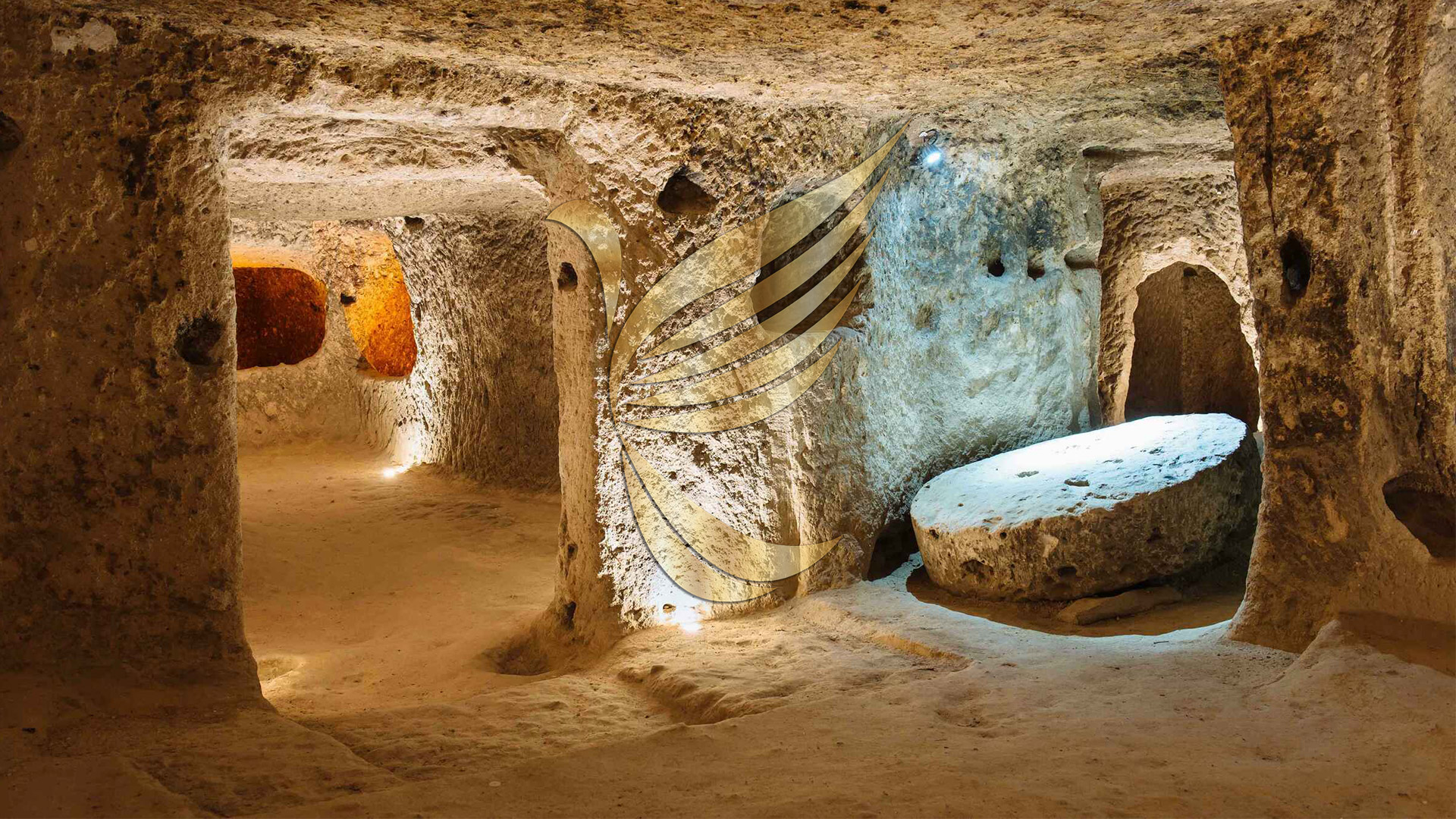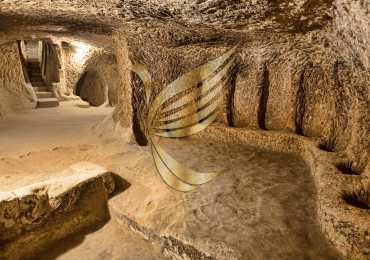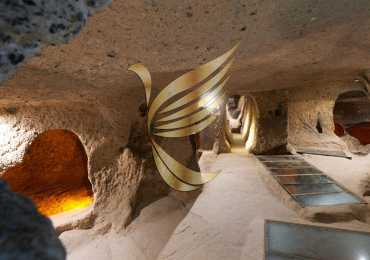
Exploring the Underground Cities Civilization in Cappadocia
The subterranean cities in Cappadocia became famous worldwide, even as very much like the bizarre fairy chimneys that characterise the landscapes within the region. Discover the history behind the fascinating settlements of Kaymakli and Derinkuyu in Turkey.
It is believed that the underground cities of Cappadocia were initially built during the eighth and seventh centuries BCE by the Phrygians, who carved their living spaces into the region’s soft igneous rock. There are around 200 cities in total in Cappadocia, with the foremost visited including Derinkuyu and Kaymakli.
The idea behind the subterranean cities was to shield the inhabitants from foreign invasion, allowing thousands of individuals to measure their lives in total secrecy. During the 14th century, the caves provided Christians with a secure haven from the threat of the Mongolians during the assaults on Timur. Even during the 20th century, they enabled people to avoid wasting themselves from persecution during the Turkish Empire.
Derinkuyu, The Extraordinary Underground City of Turkey
The first of Cappadocia’s deepest, widest and most amazing underground cities is Derinkuyu Underground City. Located on the Nevşehir – Niğde road and 30 km from Nevşehir, the underground city is found in Derinkuyu district. It’s discovered in 1963, partly cleaned and opened for visitors in 1967. This incredible archaeological discovery was stumbled upon by pure chance in 1963 by an area inhabitant while renovating his house. During renovations, he found himself ahead of a mysterious passage: An intricate labyrinth of caves and tunnels divided into several levels that meandered over 85 meters deep within the bowels of the planet. This homeowner found a true metropolis, excavated by hand which dates back to the seventh century BC.
 Right now it’s 8 open floor that reaches 50 meters down, but if all of it’s cleaned, its floors may be up to 12-13 and reaches a depth of 85 meters. This Cappadocia Underground City has total of two, 5 km cleaned, visitable area called after 52 water wells within it. These water wells are 60 – 70 meters deep and both meets the requirement for water system and functions as a airway. A number of these chimneys haven’t any reference to the surface so as to forestall the enemy, which cannot come down during the sieges within the region, from mixing poison with water. This feature is one in all the explanations why this Cappadocia underground city, which is so sheltered and equipped with a natural ventilating system, doesn’t have a technological explanation.
Right now it’s 8 open floor that reaches 50 meters down, but if all of it’s cleaned, its floors may be up to 12-13 and reaches a depth of 85 meters. This Cappadocia Underground City has total of two, 5 km cleaned, visitable area called after 52 water wells within it. These water wells are 60 – 70 meters deep and both meets the requirement for water system and functions as a airway. A number of these chimneys haven’t any reference to the surface so as to forestall the enemy, which cannot come down during the sieges within the region, from mixing poison with water. This feature is one in all the explanations why this Cappadocia underground city, which is so sheltered and equipped with a natural ventilating system, doesn’t have a technological explanation.
Even if Cappadocia Underground Cities have similar features with their purpose and architecture, you’ll encounter higher equipment while visiting Derinkuyu Underground City. The floors of the underground city, which contains a very uncertain entrance from the skin, are interconnected by narrow corridors. So as to stop entry just in case of danger, precautions were soft on huge round stones like millstones which will be moved by pulling.
While living spaces, dining halls, kitchens, stables, mysteries and cisterns are places that may be seen in almost every Cappadocia underground city, there’s also a missionary school whose ceiling is roofed with barrel vaults within the region. The cross-shaped church is carved on the 2nd floor of the underground city and might be reached by taking place the steps from the 3rd and 4th floors.
It is believed that approximately 50 thousand people can live at the identical time in Derinkuyu Underground City, where the primary settlement dates back to the Assyrian Colonies and also the first Christians were escaped from persecution and oppression. In fact we’ve got to mention that its narrow tunnels and depth can create claustrophobia, but it’s one among the foremost important places to go to in Cappadocia.
Exploring Kaymakli Underground City
Originally named Enegup in past, Kaymakli Underground City was also used as a shelter for local inhabitants for several centuries throughout the Arab-Byzantine wars. During now, it had been significantly expanded to the purpose where it, eventually, became the widest underground city in Turkey. It’s estimated that, at its peak, the population of Kaymakli grew to around 3,500 people.
After being opened to the general public in 1964, it had been awarded Unesco World Heritage status in 1985. It offers a desirable window into the past, descending eight levels deep – although only the primary four is accessed by visitors, which lie at around 20m (66ft) below ground. As a general rule, the wealthiest families lived closer to the surface. While exploring Kaymakli, you’ll pass stables, storage rooms (some of which are still used today), former homes, a church and communal kitchens, where meals were once cooked as a group for the city’s population.
 As you meander through this subterranean labyrinth, you’ll also notice lots of large, round boulders, which accustomed be rolled before of doorways as barricades to guard the local inhabitants from potential attacks. Remember to concentrate to the red arrows, which guide you down, and also the blue arrows, which guide you up, to avoid getting disorientated.
As you meander through this subterranean labyrinth, you’ll also notice lots of large, round boulders, which accustomed be rolled before of doorways as barricades to guard the local inhabitants from potential attacks. Remember to concentrate to the red arrows, which guide you down, and also the blue arrows, which guide you up, to avoid getting disorientated.
In comparison to its neighbouring underground city, Derinkuyu, Kaymakli’s tunnels are noticeably narrower, lower and more steeply inclined – worth bearing in mind if you’re claustrophobic. A 9km (5.6mi) tunnel actually connects the 2, but it’s not accessible to visitors. you’ll be able to drive between Kaymakli and Derinkuyu in precisely 10 minutes, though, so it’s easy enough if you fancy exploring both in in some unspecified time in the future.
Özkonak Underground City
Özkonak Underground City, which is 14 km faraway from Nevşehir Avanos, was built on the northern slope of İdiş Mountain where the tuff layer is that the most intense. You’ll want taking place in an apartment while visiting this Cappadocia underground city which has opened to visitors in 1972. Labyrinth tunnels, which are the most factors of connection between places in Cappadocia Underground Cities, are exists here. The most difference of this city comparing to Derinkuyu and Kaymaklı underground cities is 5-8 cm small capillary holes opened for communication and ventilation. When the doors of the places are closed with sliding stones, the full worldly connection is given these holes. Unlike other underground cities, the sliding stones were made not just for protection but also for fighting. After the doorway was closed with stones, small holes were carved on the tunnel to spear the enemy and pour hot oil.
Tatlarin (Acıgöl) Underground City
Although discovered in 1975, Tatlarin Underground City, which was opened to visitors in 1991, is 10 km north of Acıgöl town of Nevşehir. And it’s during a hill called ‘Castle’ in Tatlarin Town.
Like the other underground cities of Cappadocia, the living spaces are connected to every other with tunnels during this underground city. The big warehouses and churches in Tatlarin Underground City suggest that this might be a military garrison or a monastery complex, not a civilian settlement.
Mazı Underground City
Mazı Underground City, which is 10 km east of Kaymaklı Underground City in Nevşehir and 18 km south of Ürgüp, takes its name from the village where it’s located. It had been found by accident by a shepherd in 1995 and opened to visitors. the most meaning of Mazı is ‘Ancient City’ and there are many rock tombs from the first Roman and Byzantine periods within the valley where the village was founded.
The 8-floor underground city has entrances from 4 different locations and is roofed with sliding stones with holes within the middle for lances to shield against enemies. The difference from other samples of barns at the doorway is that the troughs carved into the rocks and therefore the width of its areas. This can be a sign that Mazı Underground City is home to a sophisticated society in agriculture. in step with the estimates, 6,000 people board Mazı Underground City at the identical time.


